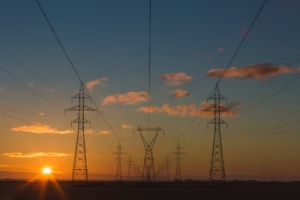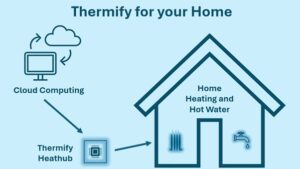
Install Solar Panels & Slash your Tax Bills
UK business owners & directors have you asked your accounts
In a world edging ever closer to net-zero deadlines, households are being asked to do more than just turn off the lights. The conversation is shifting from energy conservation to energy creation how we produce, use, and think about power at home. At the centre of this shift are two technologies making their way into everyday conversation: solar panels and heat pumps.
They both promise lower bills, cleaner energy, and more control. But they do so in different ways, with different demands and different rewards.

Solar panels offer a simple proposition. Turn sunlight into electricity. Feed your home, your car, even the grid. Once installed, solar is silent, elegant and largely invisible in its operation. No moving parts, no fuel, no fuss. Add a battery, and you’re storing power for when the sun dips or clouds roll in. You produce what you use. You become less reliant on the grid and less exposed to energy price spikes.
For homeowners who work remotely or use more energy during daylight hours, the savings can be significant. And while the upfront cost may seem steep, solar has matured costs have fallen, returns have grown, and VAT is currently set at 0% until 2027. That’s not just good policy it’s good timing.
Then there are heat pumps. Instead of generating heat, they move it from the outside air into your home. It sounds simple because it is, and yet the science behind it is beautifully efficient. For every unit of electricity consumed, a modern heat pump can deliver three to four units of heat.
That makes it an impressive option for homeowners looking to ditch gas boilers. Combined with proper insulation, heat pumps can warm your home quietly, safely, and with far lower emissions. The UK’s Boiler Upgrade Scheme offers grants of up to £7,500 to make the switch even more appealing.
But heat pumps aren’t a drop-in replacement for every home. They need space. They need insulation. And they work best when the whole system radiators, cylinders, pipework is designed to support them. Not every property qualifies without some level of upgrade.
For those with the means and the mindset, the smartest move is not either/or it’s both. Solar panels can power a heat pump, making your heating system not just efficient, but nearly carbon-free. You turn your rooftop into a miniature power station, and your heat pump into a quiet engine of year-round comfort.
This isn’t just a green choice it’s a strategic one. Grid prices are volatile. Climate pressures are growing. And households that can generate and control their energy have an undeniable edge.
It comes down to your home, your goals and your budget. Ask:
At Simcott Renewables, we see energy decisions not as hardware choices, but as part of a broader shift in how we live. It’s about designing your home for resilience. And for some, that means starting with solar. For others, it’s heat pumps. For many, it’s both.
What matters is making the right move now because energy isn’t just a monthly bill. It’s your footprint, your independence, your future.

UK business owners & directors have you asked your accounts

Ofgem has approved a £28 billion upgrade to rebuild the

Ofgem has approved a £28 billion upgrade to rebuild the

Across the UK, households are bracing for another winter of

The Autumn Budget brings a small dose of relief to

Every time you open an app, send an email, or